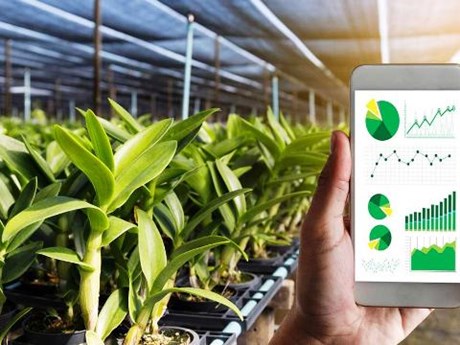The set of factors mentioned has not only made the digital transformation of agribusinesses necessary but also urgent to address industry challenges in a rapidly digitizing society.
However, the digital transformation of agribusinesses goes beyond adopting technological innovations; it involves leveraging these technologies to add value and provide companies with a competitive advantage. In other words, using technological solutions to improve efficiency, productivity, and sustainability.
Despite some level of digitization in agri-food companies in Latin America and the Caribbean, according to the analysis by the IDB on Digital Transformation of Agribusiness in Latin America and the Caribbean, these businesses are still in the early stages of digital transformation. The technology they use is often outdated or adapted to immediate needs without a long-term perspective and integration capabilities with other systems.
Given this scenario, how can small and medium-sized enterprises (SMEs) in the agribusiness sector successfully navigate the digital transformation of their operations? In this article, we will explore some key aspects to achieve this.
Digital Transformation, a Strategic Process
Digital transformation in the agribusiness sector takes various forms. It can be sensors in tractors and harvesters to monitor performance and automate usage, artificial intelligence for predictive analysis to reduce the impact of environmental changes on crops, or an electronic platform for remote import and export procedures.
Regardless of the specific technological solutions adopted by a company, it is essential to understand that digital transformation is a process. Therefore, it requires the design of an implementation plan and strategies to enhance the scope of the adopted tools. It also involves changing the way we think about our business, as it requires openness to experimentation and continuous learning.
This is the digital maturity of a company. Knowing the level of digital maturity of your business will help you determine which digital solutions are most suitable for you. The IDB report on Digital Transformation of Agribusiness in Latin America and the Caribbean categorizes them as follows:
Basic Solutions: Address the main needs of companies, helping manage business resources effectively and collect relevant data for better decision-making. For example, drones and remote sensors.
Empowering Solutions: Leverage data generated throughout the value chain to help the business achieve higher levels of efficiency and productivity. Examples include campaign planning systems, smart irrigation, precision farming, monitoring and control systems, or e-commerce platforms.
Next-Level Solutions: Can further increase a business's productivity and even help gain a considerable competitive advantage and stay ahead of emerging market trends. Examples include automated cleaning and sorting systems or blockchain, which simultaneously tracks all digital transactions on different computers.
Implementation Recommendations
While the digital transformation of any organization is a process with particular variables, some steps can help you achieve your goals. The IDB report suggests recommendations that companies can adopt to increase their digital maturity. The key is to take it step by step:
Set Ambition: Define your digital objectives, mission, and vision. Ask yourself: What is important for your business and customers? Where do you want to go with digital transformation? What new capabilities or skills do you need to develop? What are leaders in your sector doing?
Design and Plan: Once specific objectives are established, design and plan the digital transformation strategy. Consider the following points:
Define clear responsibilities and appropriate leadership to ensure objectives are monitored and achieved.
Develop a cultural change plan that incorporates an open and adaptive mindset and effectively communicates the upcoming transformation.
Identify specific needs that can be addressed with digital solutions in all areas of the company, as well as the right digital solutions for each need.
Build a roadmap that prioritizes and determines the most urgent challenges or initiatives that can represent early benefits.
Evaluate: After prioritizing all desired initiatives, identify the potential value that a solution will represent to measure the impact of the results. Prepare an approximate value approach, determining the levers of value that can enhance the solution. Compare the value with the estimated investment to determine the viability of the solution.
Before making a significant investment, develop a pilot representing the minimum viable product. Although the pilot's scope will not be that of the final solution, it will help evaluate and further develop or adapt specific functions or features of the solution. Only after the pilot process is completed is it appropriate to move on to the next step.
Scale: Categorize the capabilities of the solution for deployment and incorporate necessary changes. Some capabilities may need improvement, while new competencies must be acquired to adapt to changes, new tasks, and responsibilities.
Expand and Manage: Once the technological solution has been implemented, analyze the implementation process: recognize what could have been done better, identify what was done correctly, and establish best practices or points to consider in the future.
It is essential to consider that there will be barriers or slowdowns in the process. Do not be discouraged; be prepared to know how to face them.
Digitalization in Central American SMEs
While agribusiness digitization is in its early stages across the region, the digital gap is the main challenge to digital transformation for agribusiness SMEs in Central America, according to the ECLAC study.
However, there are several initiatives seeking to overcome this gap with technological solutions suitable for this context. For example, El Salvador has a platform called Agromóvil, providing producers with information via mobile phones about market prices, weather conditions, pest and disease alerts, business opportunities, and technical advice. In Honduras, the CacaoMóvil app offers technical content and tools to promote knowledge and improve the competitiveness of small cocoa producers.
In addition to these examples, the ECLAC report includes general proposals to reduce the digital gap for small producers and SMEs, which can be adopted by other producers:
Strengthen Associative Schemes: Promote partnerships between small producers and SMEs for the collective use of more sophisticated digital technologies, along with training programs in basic digital technologies.
Promote Informatics Platforms: Encourage the creation of articulated computer platforms with accessible information for producers on prices, weather alerts, and linkages between value chain actors.
Create Value Chain Integration Networks: Enable the creation of value chain integration networks to provide technical assistance schemes with differentiated products according to the needs of each group of producers. Also, offer training on specific digital technologies for each group.
General Recommendations
While every company has a different path in its digital transformation, here are some general suggestions for better results:
Constant Inspiration: Seek constant inspiration to achieve what your company needs. Implement a periodic process to search for solutions, technologies, and best practices nationally and internationally. Attend events and innovation spaces in the sector to identify solutions or find inspiration.
Culture and Growth Mindset: Remember that the success of digital transformation is not solely based on implementing technological solutions. A determining factor is achieving the right mindset in your company, preparing people for changes and promoting innovation. Work on effectively communicating the reason for digital transformation, highlighting the benefits of innovation, promoting recognition of change adoption, rewarding innovation, and involving everyone in the process from the planning phase, making them part of the transformation.
Ownership and Focus: To achieve true ownership of digital transformation and a focus on achieving results, it is essential that those responsible for its execution consider it a priority.
Identify the Optimal Point: Focus your efforts on initiatives at the intersection of desirability (do we want to do it?), viability (should we do it?), and feasibility (can we do it?).
Regardless of your business's digital maturity level, when planning the digital transformation strategy, it is essential to maintain a long-term perspective.
To give you an idea of how to navigate the path of digital transformation, you can start by using digital tools to capture data in different operational areas. An additional step can be the automation of mechanical tasks to streamline, expedite, and make processes such as harvesting or packaging safer. Digital solutions for customer and supplier management can also be implemented.
Once the initial stages of digital transformation are completed, you can integrate technologies and data to achieve a holistic view of your operations for more precise decision-making. Additionally, you can leverage Big Data and Artificial Intelligence to improve your business decisions and better manage risks.



Follow Us